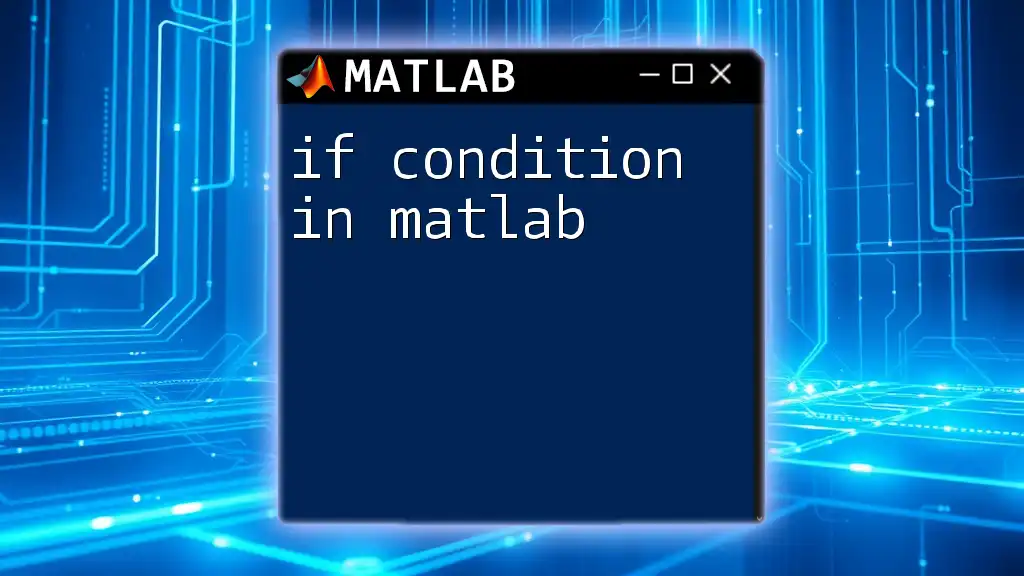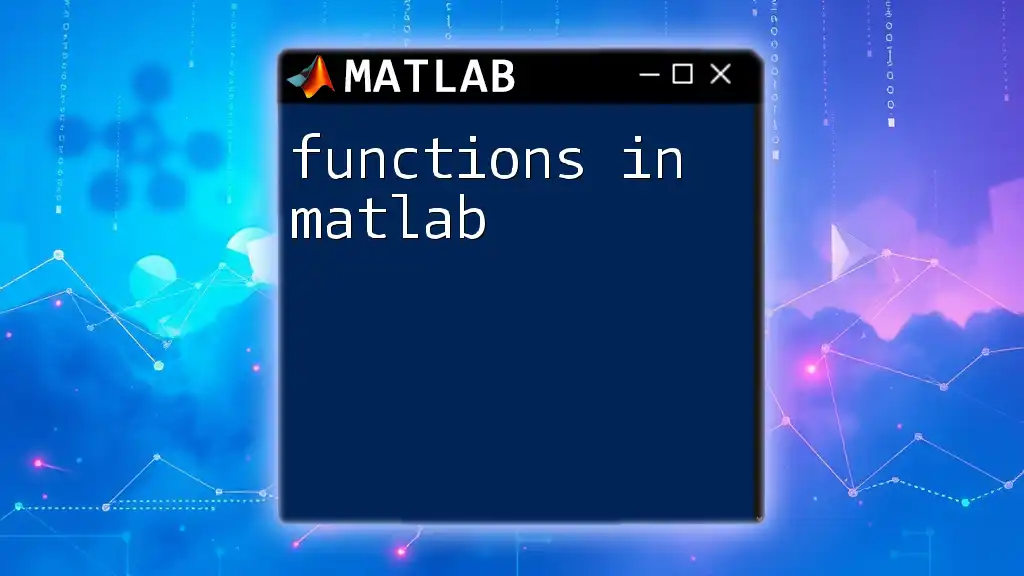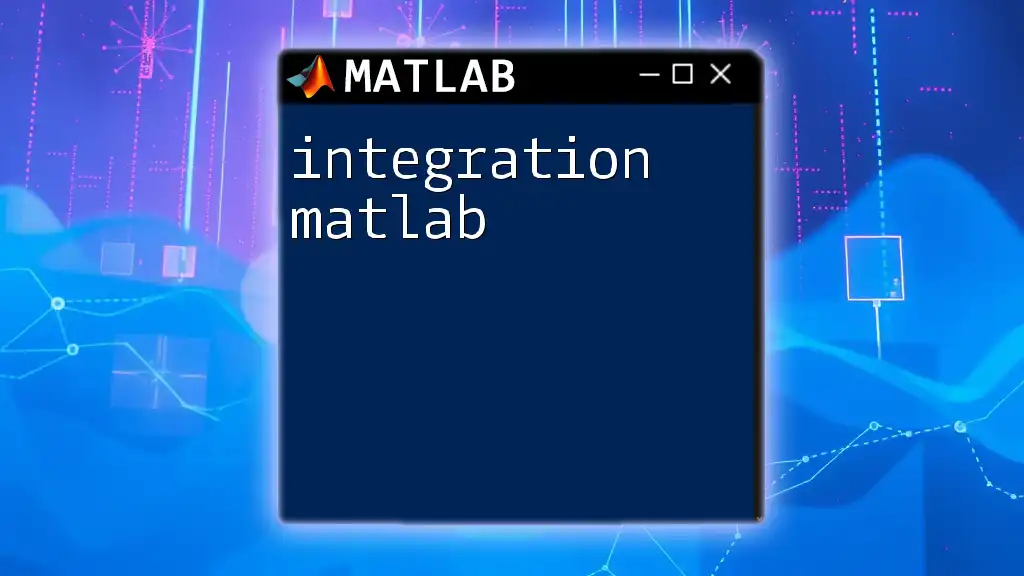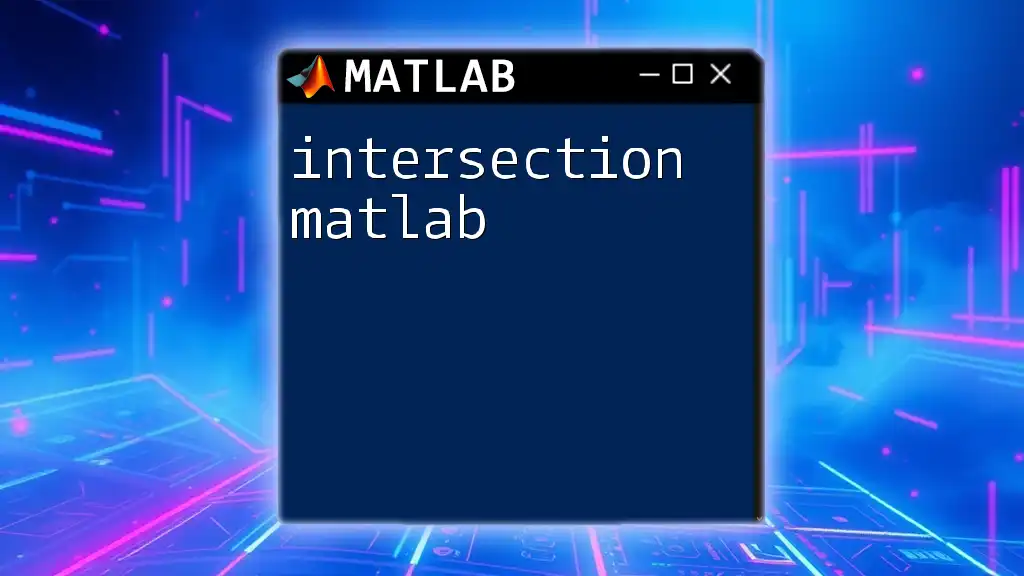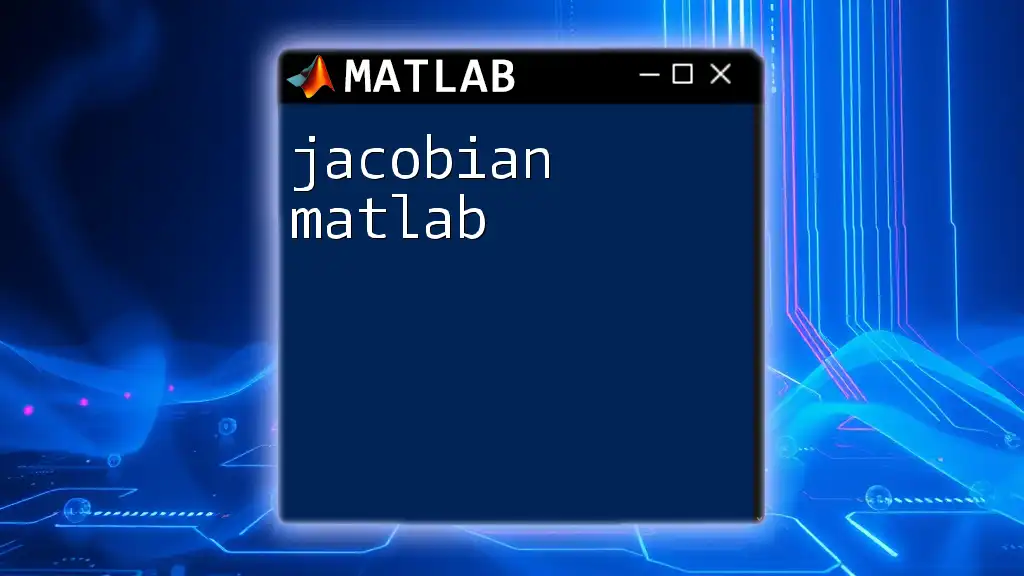LU factorization in MATLAB decomposes a matrix into the product of a lower triangular matrix (L) and an upper triangular matrix (U) using the `lu` function.
A = [4, 2; 3, 1];
[L, U] = lu(A);
What is LU Factorization?
LU Factorization is a mathematical method that decomposes a given square matrix \( A \) into two simpler matrices, namely a lower triangular matrix \( L \) and an upper triangular matrix \( U \). This is represented as:
\[ A = LU \]
This decomposition is significant in numerical analysis, especially for solving linear systems, inverting matrices, and calculating determinants.

Applications of LU Factorization
LU Factorization is utilized in various applications, primarily because it simplifies complex matrix operations:
- Solving Linear Equations: LU Factorization allows for efficient solutions to systems of linear equations by transforming the problem into simpler steps.
- Matrix Inversion: With the LU decomposition in hand, we can invert matrices more straightforwardly.
- Determinant Calculation: The determinant of matrix \( A \) can be calculated as the product of the diagonal elements of \( U \) (if \( A \) is square).
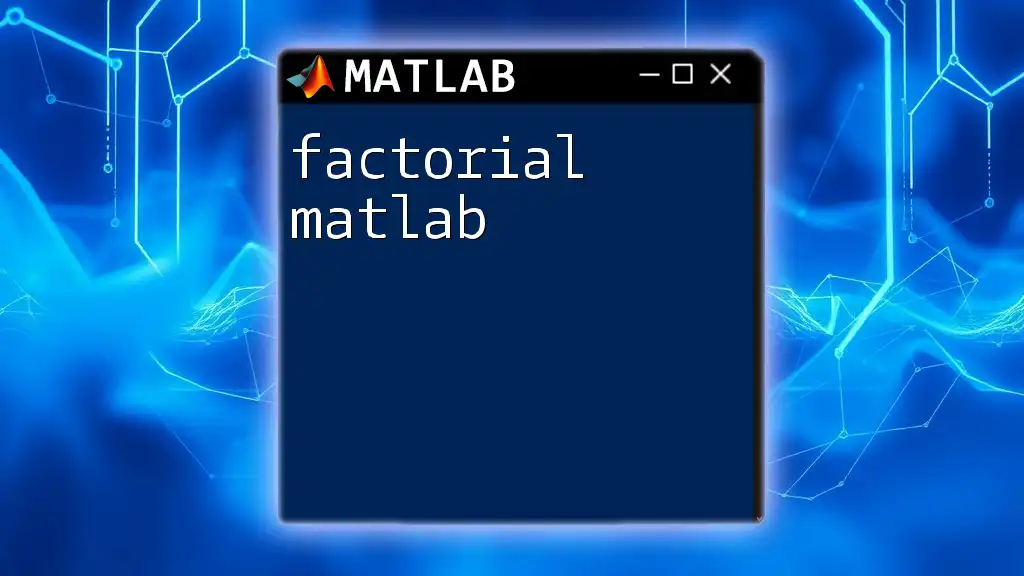
Overview of MATLAB
Before diving into the specifics of LU Factorization, it's crucial to understand the basics of MATLAB, a powerful environment built primarily for matrix manipulations. In MATLAB, everything revolves around matrices, making it particularly well-suited for tasks involving linear algebra.
MATLAB Syntax Essentials
When working in MATLAB, grasping its syntax is paramount for effective programming. Some essential aspects include:
- Commands are case-sensitive.
- Most operations involve matrices, even for scalar values.
- Always remember to end your statements with a semicolon to suppress output unless you require it for debugging.

What is a Matrix Factorization?
At its core, matrix factorization refers to the process of breaking down a matrix into multiple component matrices that, when multiplied together, yield the original matrix. In the context of LU Factorization:
L (Lower Triangular Matrix)
The matrix \( L \) is triangular, meaning all entries above the diagonal are zero. Its elements are often calculated based on a series of transformations performed on matrix \( A \).
U (Upper Triangular Matrix)
Contrarily, the matrix \( U \) is also triangular, but with all entries below the diagonal set to zero. It contains the coefficients that allow for the reconstruction of the original matrix when multiplied by \( L \).
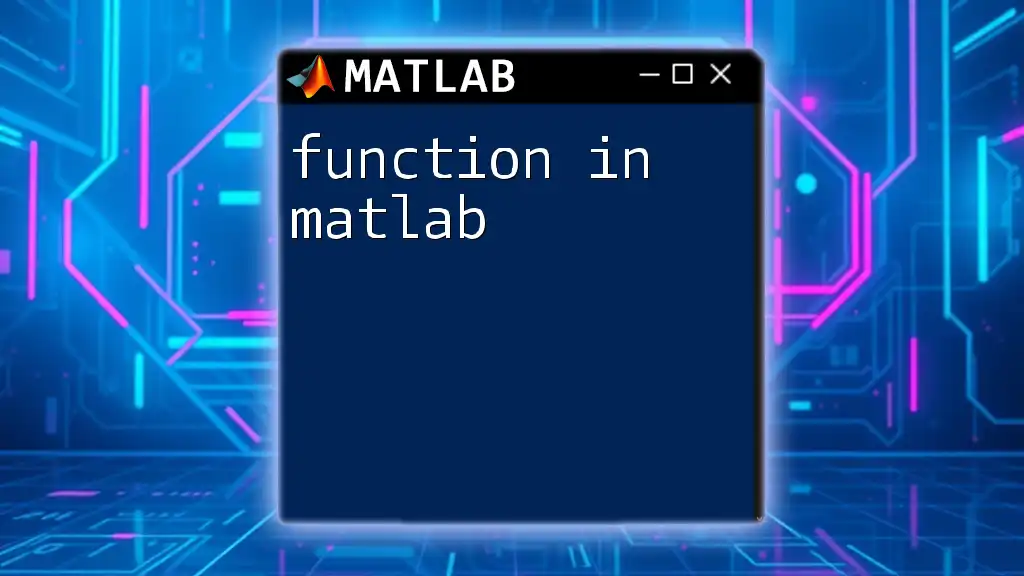
Performing LU Factorization in MATLAB
MATLAB provides a built-in function, `lu`, which simplifies the LU Factorization process. Using this function can drastically lessen computation time and complexity.
Using the `lu` Function
The syntax for the `lu` function is straightforward:
[L, U] = lu(A)
In this command:
- `A`: The input square matrix you wish to factor.
- `L`: The resulting lower triangular matrix.
- `U`: The resulting upper triangular matrix.
Example Code Snippet
Here’s an example illustrating LU Factorization in MATLAB:
A = [4, 3; 6, 3];
[L, U] = lu(A); % Perform the factorization
disp('Lower Triangular Matrix L:');
disp(L); % Display the lower triangular matrix
disp('Upper Triangular Matrix U:');
disp(U); % Display the upper triangular matrix
In this scenario, when you execute the code, you will obtain matrices \( L \) and \( U \) that when multiplied together produce matrix \( A \).
Step-by-step Guide to LU Factorization
Preparing Your Matrix
To use LU Factorization effectively, you must prepare your matrix properly. It is essential that the matrix is square (equal number of rows and columns). A non-square matrix cannot undergo LU Factorization.
Executing the LU Factorization
To execute LU Factorization in MATLAB, follow these steps:
- Define your square matrix.
- Use the `lu` function to factorize the matrix:
% Define a square matrix A = [2, -1, 1; 3, 3, 9; 3, 3, 5]; % Perform LU factorization [L, U] = lu(A); % Display the results disp('Lower Triangular Matrix L:'); disp(L); disp('Upper Triangular Matrix U:'); disp(U);
In this code:
- You create a matrix \( A \).
- You apply the `lu` function to calculate \( L \) and \( U \).
- Finally, you display the resulting matrices.
Interpreting the Results
Understanding the output matrices is crucial. The result clearly outlines how \( L \) and \( U \) interact to recreate \( A \) via matrix multiplication.
A = L * U
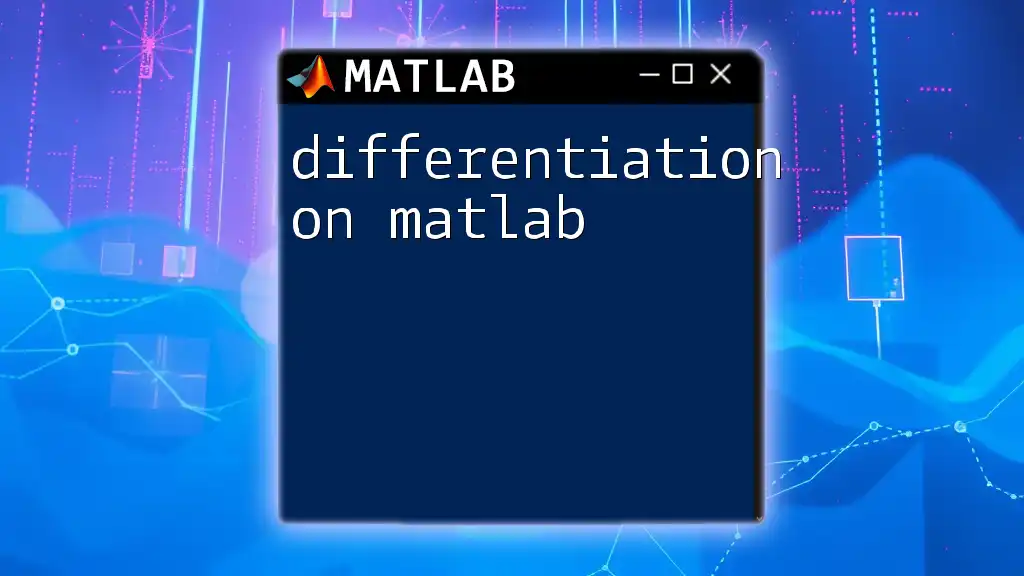
Applications of LU Factorization
Solving Linear Equations
LU Factorization can significantly streamline solving systems of linear equations. For a system defined as \( Ax = b \), you can use the factorization as follows:
- First, perform \( Ly = b \) using forward substitution.
- Then, solve \( Ux = y \) via back substitution.
Here’s a practical example to illustrate this:
b = [1; 2; 3];
y = L \ b; % Forward substitution
x = U \ y; % Back substitution
In this snippet:
- `y` is calculated by solving the lower triangular system.
- `x` is the final solution vector derived from the upper triangular system.
Matrix Inversion
Another powerful application of LU Factorization is matrix inversion. You can compute the inverse of matrix \( A \) using:
A_inv = U \ (L \ eye(size(A)));
This technique exploits the properties of triangular matrices to facilitate efficient computation.
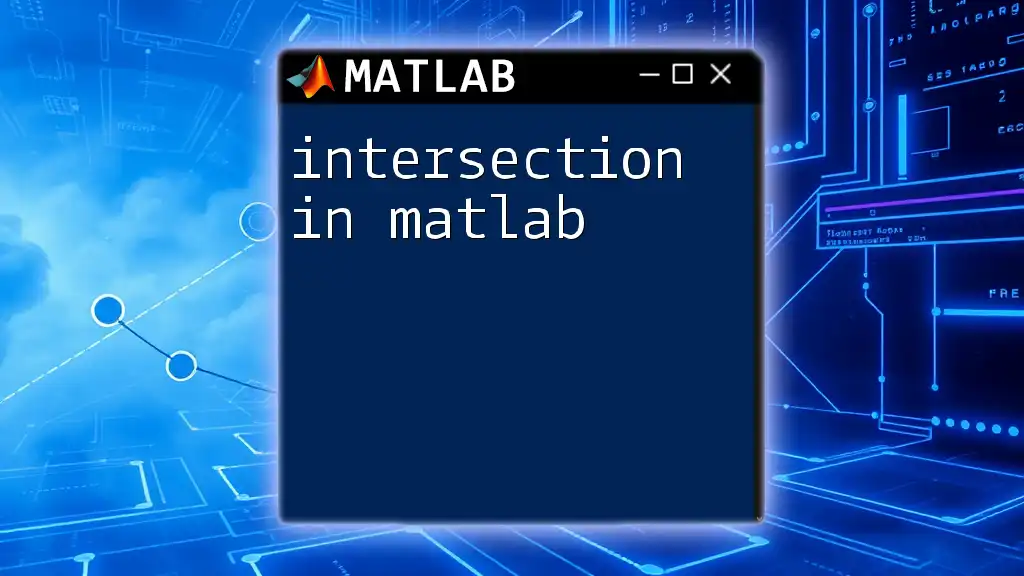
Common Errors and Troubleshooting
Identifying Non-square Matrices
Attempting to perform LU Factorization on a non-square matrix will yield an error. Always confirm that your matrix \( A \) is square before applying LU Factorization.
Handling Singular Matrices
A singular matrix, which has a determinant of zero, cannot be factorized using LU. MATLAB provides warnings when such situations arise, so it’s essential to check the matrix’s properties before processing.
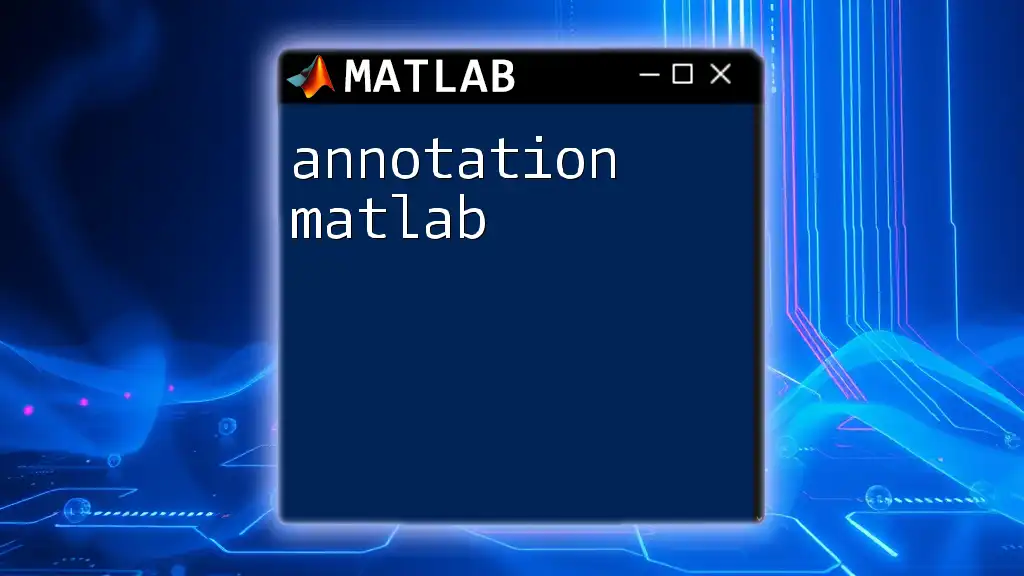
Recap of Key Points
Throughout this guide, we explored the fundamentals of LU Factorization in MATLAB, its critical role in numerical computations, and how to effectively implement it using MATLAB’s built-in functionalities.

Encouragement to Experiment
Playing with the code examples and modifying matrices will lead to a deeper understanding of LU Factorization. Don’t hesitate to experiment with different matrices to see how the outputs and the solutions change.

Additional Resources
For further reading and to enhance your understanding of LU Factorization and matrix operations in MATLAB, consider exploring the official MATLAB documentation, specialized literature on numerical methods, and online courses that focus on MATLAB programming and its applications in engineering and science.







